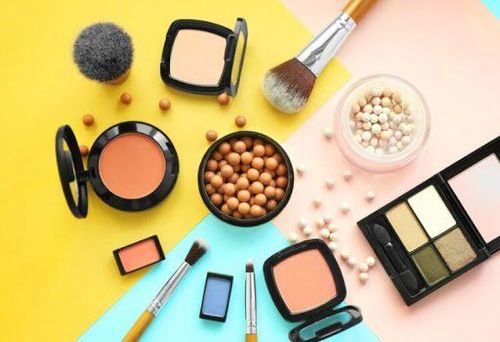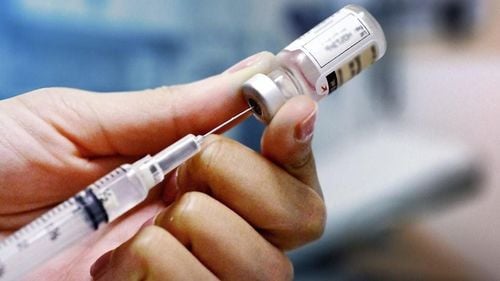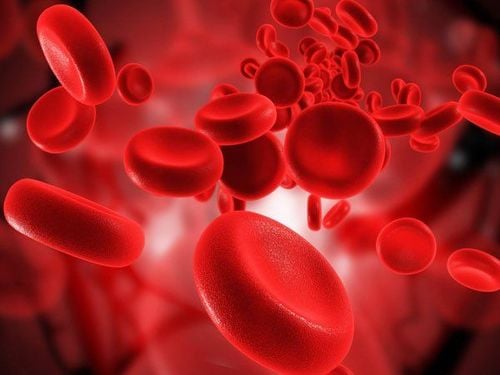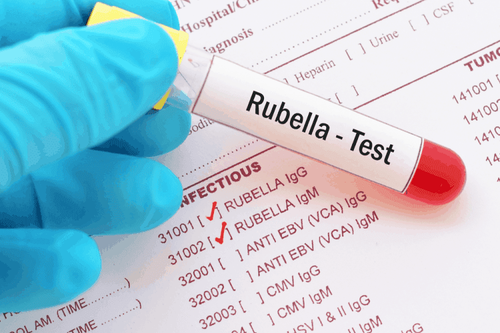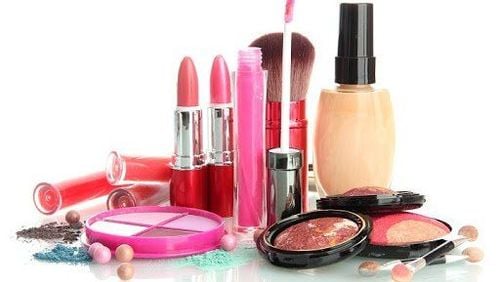This is an automatically translated article.
Most cosmetics contain a certain amount of lead. This is a heavy metal that can be harmful to health. Therefore, it is important to know how to test for lead in cosmetics as well as the signs of lead poisoning.1. Understanding poisoning only
1.1. What is lead? Lead is a highly toxic metal. When the body absorbs too much lead from cosmetics such as lipstick, foundation, concealer, ... will cause lead poisoning. More seriously, this situation will be harmful to health.Besides cosmetics, lead is also found in paint on old walls and toys, dust pollution,... Lead poisoning is usually accumulated in the body over a long period of time from a few months or a few years. . It can cause severe mental and physical impairment. Young children are also the most vulnerable to lead poisoning, because their brains and nervous systems are still developing. Children get lead in their bodies when they put objects that contain it in their mouths.
1.2. Symptoms of Lead Poisoning Lead poisoning can affect many parts of the body. Therefore, the manifestations of this condition are also very diverse. Specifically:
Abdominal cramps Constipation Headaches Sleep disorders Irritability Decreased developmental skills in children Fatigue High blood pressure Numbness or tingling in extremities Memory loss Anemia Kidney dysfunction High doses of lead poisoning can lead to emergency symptoms such as:
Severe abdominal pain and cramps Vomiting Muscle weakness Falling while walking Convulsions Coma Confusion, coma and convulsions The harmful effects of lead on children's brain development such as: low IQ, hearing problems, short-term and long-term learning difficulties, developmental delay.

Triệu chứng ngộ độc chì rất đa dạng như: Đau bụng, táo bón, thiếu máu,...
2. How to test for lead in cosmetics?
The FDA conducted two surveys to find lead and other chemical ingredients in cosmetics. They have a wide selection of cosmetics at different prices. The first survey was completed in March 2012 with more than 150 products, including eyeshadow, blush, lipstick, lotion, mascara, foundation, powder, compact powder, shaving cream and paint face.FDA has contracted with Frontier Global Sciences, Inc. in Seattle, Washington to perform the analysis for this survey. Contractor uses the full dissolution method and uses FDA-approved hydrofluoric acid.
The objective of the second survey completed in February 2013 was to deepen the findings of the first survey. This time around, the researchers focused on eyeshadow, blush, powder, and lipstick. These are products containing small amounts of "heavy metals" found in the first survey.
The results show that the amount of lead in this cosmetic is very small and usually does not pose a health hazard. The FDA-approved method used in the first survey consistently gives values equal to or higher than those obtained with the method used in the second survey. Both surveys found that products such as eyeshadow, blush, and pressed powder contained more heavy metals than other cosmetics. This suggests that most of these substances in cosmetics come from minerals used as colorants and fillers such as clay and talc.
FDA has released draft guidance for industry recommending the maximum use of 10 ppm for lead in cosmetics. This guide applies to cosmetic lip products (lipstick, lip gloss, and lip primer) and topical cosmetics (such as eyeshadow, blush, shampoo, and body cream) that are marketed. United States.
3. Treatment of lead poisoning
Lead poisoning is diagnosed with a blood test. Additional tests may be ordered to evaluate the amount of iron-storage cells in the blood, such as X-rays, bone marrow biopsy.
Bác sĩ sẽ chỉ định xét nghiệm máu để chẩn đoán nhiễm độc chì
The first step of treatment is to locate and remove the source of the lead. In more severe cases, chelation therapy may be used. The lead is then excreted in the urine. The most commonly used chemotherapeutic agents include EDTA and DMSA. However, these drugs can cause some side effects such as: EDTA causes kidney dysfunction and DMSA causes nausea, abdominal pain, allergies. It can be seen that lead poisoning is very dangerous and all of us are at risk of lead poisoning. Therefore, pay attention to choose cosmetics from reliable manufacturers, do not overdo makeup in daily life. Especially should maintain a healthy lifestyle, science to get good health.
Please dial HOTLINE for more information or register for an appointment HERE. Download MyVinmec app to make appointments faster and to manage your bookings easily.
References: fda.gov - healthline.com - medicalnewstoday.com



